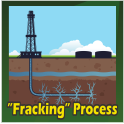Industry Report Says Marcellus Shale Drilling is Up
On Friday, July 22, 2011
0
comments
ASSOCIATED PRESS (DUQUESNE, PA)
Gas production quadrupled during the one-year period, while the number of wells in use jumped 77 percent, according to the report by the Marcellus Shale Coalition, which paid for the study.
The report estimates that this year's production will be more than 2 1/2 times last year's, and projects steady growth through 2020.
Thousands of wells have been drilled across the state in just the last few years, though not all are in production. The boom has raised environmental concerns about the use of hydraulic fracturing, a drilling technique in which water, sand and a small amount of chemicals are used to open gas-bearing shale formations deep underground.
The researchers found that natural gas production jumped from 300 million cubic feet per day to 1.3 billion from 2009 to last year. The number of wells in use increased from 595 in 2009 to 1,055 during that time.
A Penn State University expert not involved with the report said that while early production data are encouraging, long-term estimates should be viewed with caution.
Michael Arthur of Penn State's Department of Geosciences said the short-term performance of wells in north-central Pennsylvania "is much better than expected." If the Marcellus wasn't profitable, energy companies "wouldn't be forging ahead" at the current pace, he said. He added, however, that "we don't have data to effectively make accurate long-term projections."
Whatever happens in the future, leaseholders already are reaping benefits. The study found that companies paid about $1.85 billion in lease and royalty payments in 2010. That figure is expected to fall this year to about $1.5 billion, and then rise again in 2012.
The authors of the study were Penn State researchers Timothy Considine, Robert Watson and Seth Blumsack of the Department of Energy and Mineral Engineering. They estimated that 2,300 new wells may be drilled this year and about 2,400 more in each of the next five years.
Environmental advocates and communities where there is large-scale drilling have been pressing for an extraction tax or fee on the burgeoning industry. A commission appointed by Gov. Tom Corbett has recommended such a fee, but did not suggest how much companies should pay. Pennsylvania is the largest drilling state that doesn't impose a tax or fee on natural gas extraction.
Kathyrn Klaber, president and executive director of the Marcellus Shale Coalition, signaled support Wednesday for an impact fee. Acknowledging there are "some unmet needs," she said: "A reasonable, competitive impact fee that takes those dollars back to the community in which we are operating is probably the right model to move forward with."
Total Marcellus spending is projected to rise to $12.7 billion this year from $3.2 billion in 2008, according to the report. It also claims robust employment growth, with about 60,000 jobs in 2009 growing to nearly 140,000 last year. The industry projects it will have more than 156,000 employees this year.
Companies represented at a press conference for the study Wednesday said they're already hiring more workers.
The report suggests that the Marcellus could become the largest producing gas field in the U.S. by 2020, supporting perhaps 250,000 jobs. It could supply a quarter of the nation's natural gas if those projections come true.
Anastasia Shcherbakova, a professor of energy economics at Penn State, said long-term production estimates are subject to many variables, including price, market demand and political factors. She said companies may need to find customers outside of the U.S. if Marcellus production continues to rise dramatically. But they would have to make expensive upgrades to their plants so they could convert the gas into liquid form, which is more suitable for shipping. For that to happen, the U.S. government might have to pass legislation with tax credits, she said.
The industry group paid the Penn State researchers $100,000 to conduct the study and report their findings. The school said it does not make any warranty to the accuracy of the information, which was obtained by confidential surveys of the industry.








